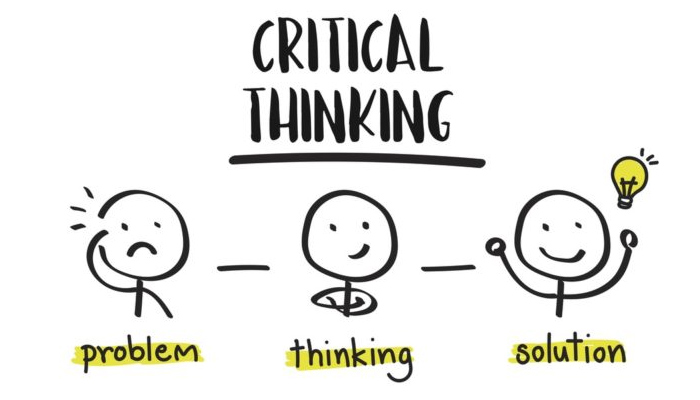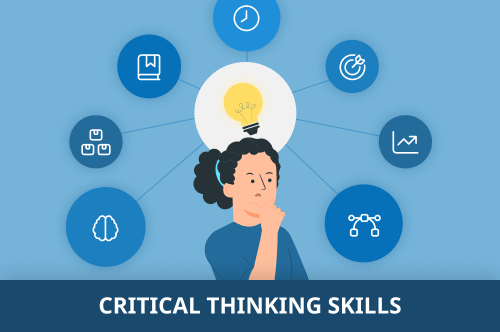In today’s dynamic world, cultivating critical thinking skills among students is not just a desirable trait—it’s essential.
As young learners navigate a world filled with information overload, artificial intelligence, and rapid technological change, schools play a crucial role in equipping them with the tools to evaluate, analyze, and act wisely.
Encouraging critical thinking skills in classrooms prepares students to become independent thinkers, empathetic communicators, and lifelong learners.
Understanding the Importance of Critical Thinking Skills

Critical thinking skills involve the ability to think clearly and rationally, understand the logical connection between ideas, and make reasoned judgments.
These skills are especially vital for school children as they shape the foundation of decision-making, problem-solving, and innovation across all academic subjects and real-life situations.
At institutions like Shigally Hill International Academy Dehradun, educators recognize that fostering such cognitive abilities is crucial for holistic development.
Schools such as a girls school in Dehradun have shown how a tailored approach to nurturing these skills can empower students from an early age.
Embedding Critical Thinking into School Curriculum

To nurture critical thinking skills effectively, schools must embed them intentionally into the curriculum rather than treating them as an add-on. This involves:
Aligning learning outcomes with higher-order thinking goals based on Bloom’s Taxonomy. Rather than stopping at memorization, students should progress toward analysis, synthesis, and evaluation.
Using Socratic questioning techniques, where students are prompted to dig deeper, challenge assumptions, and support their opinions with evidence.
Designing project-based learning tasks that mimic real-world problems and demand analytical reasoning and creativity.
For example, instead of asking students to memorize historical dates, teachers can challenge them to evaluate the causes and consequences of events, thereby sharpening their critical thinking skills.
Creating Space for Reflection and Discussion

One major content gap in many school systems is the absence of metacognitive reflection—thinking about one’s own thinking. Teachers should provide time for students to pause, reflect, and self-assess:
What assumptions did I make?
Could there be an alternate viewpoint?
What evidence supports my conclusion?
When students engage in journaling or group discussions around such questions, they not only become better thinkers but also more respectful communicators. This approach transforms classroom conversations into platforms for deeper analysis rather than surface-level debate.
Encouraging Reasoning and Open-Ended Exploration

Fostering critical thinking skills also means going beyond yes/no answers. Teachers should regularly pose open-ended questions that have no single correct answer. Questions such as:
“What would happen if…?”
“Why do you think that solution might work?”
“Can you find another way to solve this?”
These prompts help students embrace ambiguity and explore diverse solutions, fostering flexibility and intellectual curiosity—both core aspects of critical thinking skills.
Teaching Information Literacy
In an age of misinformation, one of the most critical areas where students need guidance is information literacy.
It’s not enough to teach children how to Google answers; they need to know how to evaluate sources, detect bias, and distinguish fact from fiction.
Engaging students in projects like analyzing fake websites or challenging media headlines can train them to think skeptically and responsibly.
Teaching critical thinking skills in this context ensures that students grow into informed citizens capable of navigating the digital world wisely.
Creating a Safe and Diverse Learning Environment

To genuinely foster critical thinking skills, classrooms must be psychologically safe spaces where all students feel free to express their thoughts without fear of judgment.
Encouraging diversity of opinion and promoting civil discourse allows students to hear perspectives different from their own, refining their own views in the process.
Bringing in diverse sources—primary documents, personal narratives, multimedia content—enriches classroom discussions and prepares students to tackle complex issues with empathy and nuance.
Assessing Critical Thinking Without Standardized Tests

Traditional assessments rarely capture critical thinking skills. Schools should explore alternative assessments like:
Portfolios
Project presentations
Reflective essays
Peer and self-evaluations
These methods offer insight into a student’s ability to apply logic, reason through problems, and synthesize information—hallmarks of effective critical thinking.
Conclusion
Empowering students with critical thinking skills is not just about improving academic outcomes; it’s about preparing them for life.
By embedding these practices into everyday instruction, schools like Shigally Hill International Academy Dehradun are shaping thoughtful, responsible, and capable young minds who are ready to face the complexities of the world.
As educators, administrators, and parents, the call to action is clear—let us commit to classrooms that don’t just teach content, but that teach students how to think.



